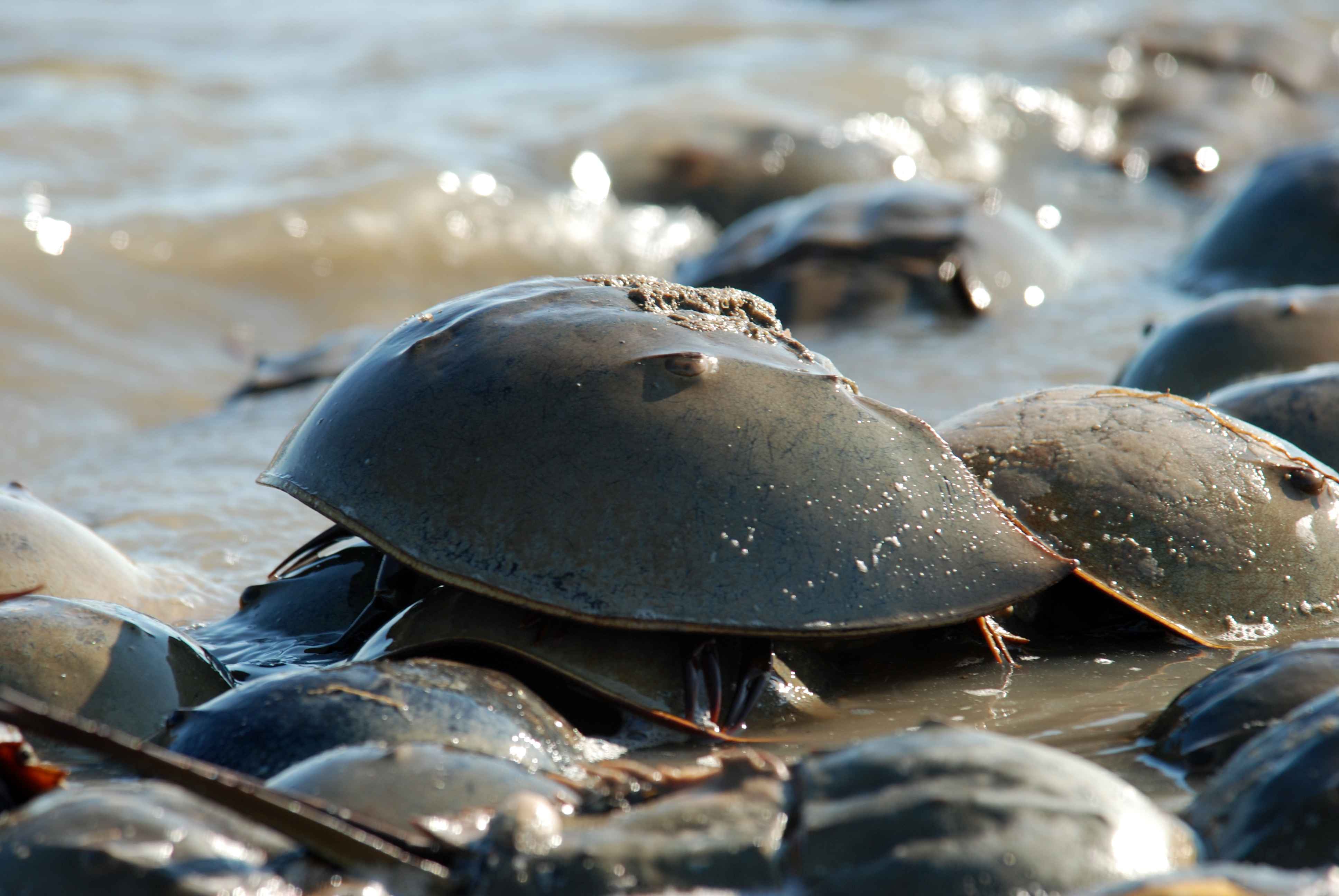|
Xiphosura
Xiphosura (; , in reference to its sword-like telson) is an order of arthropods related to arachnids. They are more commonly known as horseshoe crabs (a name applied more specifically to the only extant family, Horseshoe crab, Limulidae). They first appeared in the Hirnantian (Late Ordovician). Currently, there are only four living species. Xiphosura contains one suborder, Xiphosurida, and several stem-genera. The group has hardly changed in appearance in hundreds of millions of years; the modern horseshoe crabs look almost identical to prehistoric genera and are considered to be living fossils. The most notable difference between ancient and modern forms is that the abdominal segments in present species are fused into a single unit in adults. Xiphosura were historically placed in the class Merostomata, although this term was intended to encompass also the Eurypterida, eurypterids, whence it denoted what is now thought to be an unnatural (paraphyletic) group (although this is a gr ... [...More Info...] [...Related Items...] OR: [Wikipedia] [Google] [Baidu] |
Horseshoe Crab
Horseshoe crabs are arthropods of the family Limulidae and the only surviving xiphosurans. Despite their name, they are not true crabs or even crustaceans; they are chelicerates, more closely related to arachnids like spiders, ticks, and scorpions. The body of a horseshoe crab is divided into three main parts: the cephalothorax, abdomen, and telson. The largest of these, the cephalothorax, houses most of the animal's eyes, limbs, and internal organs. It is also where the animal gets its name, as its shape somewhat resembles that of a horseshoe. Horseshoe crabs have been described as "living fossils", having changed little since they first appeared in the Triassic. Only four species of horseshoe crab are extant today. Most are marine, though the mangrove horseshoe crab is often found in brackish water, and the Atlantic horseshoe crab is resident in brackish estuarine ecosystems such as the Delaware and Chesapeake bays. Additionally, certain extinct species transitioned t ... [...More Info...] [...Related Items...] OR: [Wikipedia] [Google] [Baidu] |

